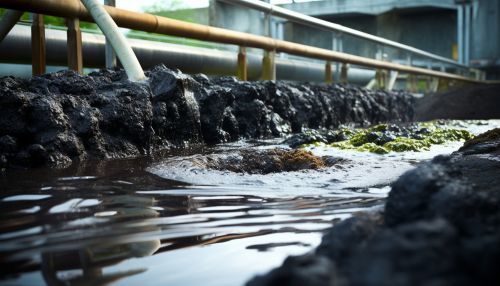Activated sludge
Introduction
Activated sludge is a process used in wastewater treatment to reduce the concentration of organic and inorganic compounds. This process involves the growth of a diverse microbial community, known as activated sludge, which is capable of metabolizing the pollutants present in the wastewater. The activated sludge process is a key component of many wastewater treatment systems and is widely used around the world.


History
The activated sludge process was first developed in the early 20th century. In 1914, two British engineers, Edward Ardern and William Lockett, conducted experiments at the Manchester Corporation's Davyhulme Sewage Works. Their work led to the development of the activated sludge process, which was then rapidly adopted in many countries.
Process
The activated sludge process involves several steps:
1. Aeration: Wastewater is mixed with a suspension of activated sludge in an aeration tank. Air or oxygen is bubbled through the mixture to provide the oxygen necessary for the microbes to metabolize the pollutants.
2. Sedimentation: After aeration, the mixture is allowed to settle in a secondary clarifier. The activated sludge, which is heavier, settles to the bottom of the tank, while the treated water is drawn off from the top.
3. Return and waste: A portion of the settled sludge is returned to the aeration tank to maintain the microbial population. The remaining sludge, known as waste activated sludge, is removed from the system for further treatment and disposal.
Microbial Community
The microbial community in activated sludge is diverse and complex, consisting of bacteria, fungi, protozoa, and other microorganisms. These microbes work together to degrade the organic and inorganic pollutants in the wastewater. The specific composition of the microbial community can vary depending on the characteristics of the wastewater and the operating conditions of the treatment system.
Applications
Activated sludge is used in a wide range of applications, from municipal wastewater treatment plants to industrial wastewater treatment systems. It is particularly effective for treating wastewater with high concentrations of organic matter, such as sewage and industrial effluents.
Advantages and Disadvantages
The activated sludge process has several advantages, including its ability to handle high volumes of wastewater and its effectiveness in removing a wide range of pollutants. However, it also has some disadvantages, such as the need for a large amount of energy to aerate the wastewater and the production of a large amount of sludge that must be disposed of.
Future Developments
Future developments in the activated sludge process may include improvements in energy efficiency, reductions in sludge production, and enhancements in pollutant removal efficiency. These advancements could be achieved through various means, such as the development of new microbial strains, the optimization of process conditions, and the integration of novel technologies.
